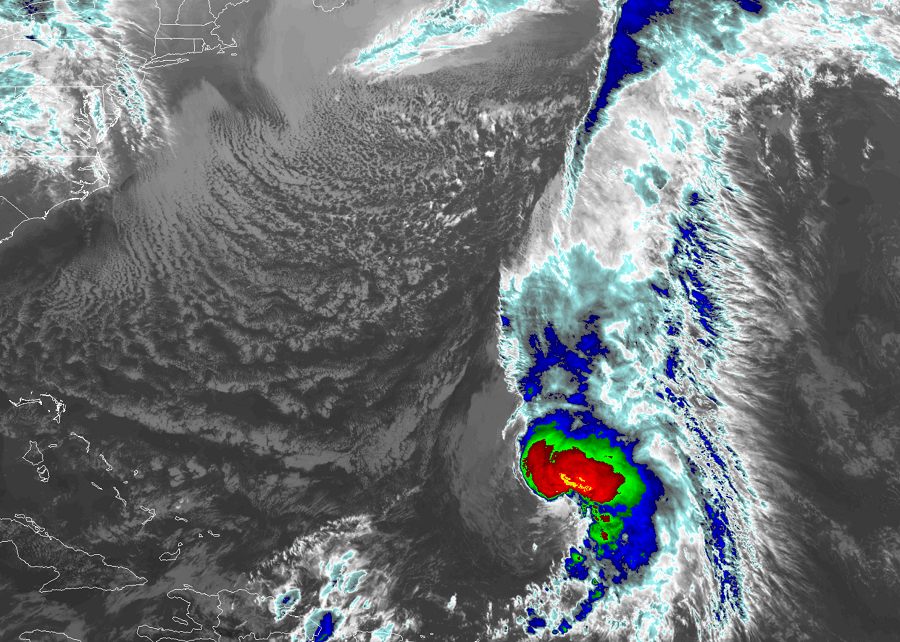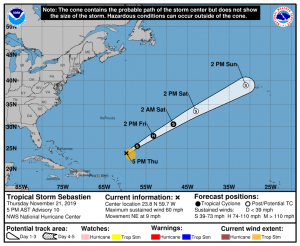
While it was initially forecast to be absorbed by an approaching frontal system, Tropical Storm Sebastien is holding its own –and could even become a hurricane soon. Fortunately, located in the central Atlantic, no direct impacts to any landmass are expected.
In the latest advisory from the National Hurricane Center, the center of Tropical Storm Sebastien was located near latitude 23.8 North, longitude 59.7 West. Sebastien is moving toward the northeast near 9 mph, and this motion is expected to continue with an increase in forward speed during the next few days. Maximum sustained winds are near 60 mph with higher gusts. According to the NHC, some strengthening is expected during the next 24 hours and Sebastien could become a hurricane on Friday. A weakening trend is expected to begin by late Friday, and the system is likely to become an extratropical cyclone on Saturday.

Since the satellite era began in 1966 when such storms could be tracked in the Atlantic, only seven Atlantic hurricanes have formed after November 20. The seven storms are 1969’s Martha, 1980’s Karl, 1984’s Lili, 1998’s Nicole, 2001’s Olga, 2005’s Epsilon, and 2016’s Otto. The Atlantic Hurricane Season ends on November 30, but storms do form from time to time in the off-season.